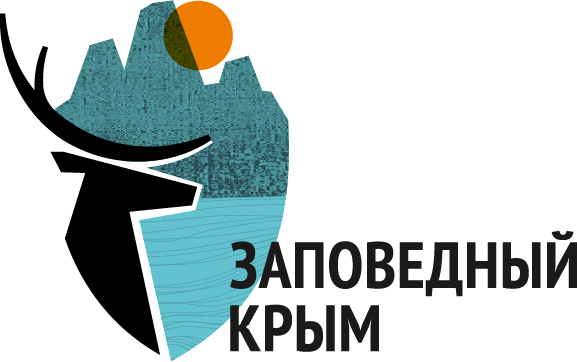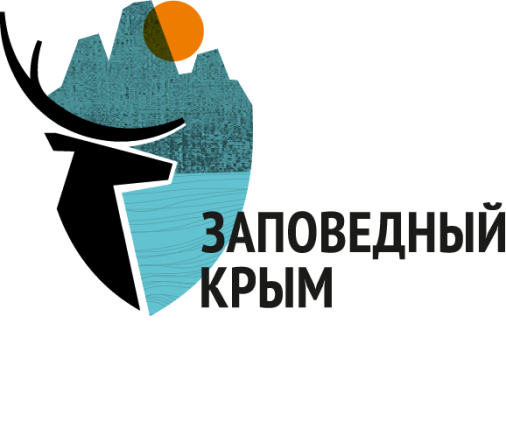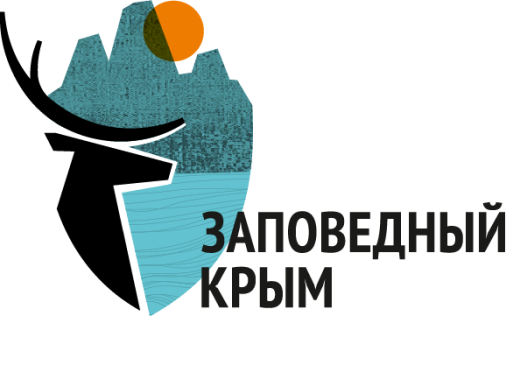

CULTURAL HERITAGE
Opuksky Nature Reserve is distinguished by its rich cultural heritage and stunning nature.
Sites of the Late Bronze Age, ancient and early medieval settlements, the ancient city Kimmerikon, the monument to the Bosporus fortification — the Citadel, the remains of an ancient rural estate, catacombs and quarries, the cemetery of wooden, stone and lead anchors and the monument to Soviet military topographers will narrate you the history of the Kerch Peninsula.
Sites of the Late Bronze Age, ancient and early medieval settlements, the ancient city Kimmerikon, the monument to the Bosporus fortification — the Citadel, the remains of an ancient rural estate, catacombs and quarries, the cemetery of wooden, stone and lead anchors and the monument to Soviet military topographers will narrate you the history of the Kerch Peninsula.
The nature reserve can surprise you with more than just special climatic conditions, unique flora and fauna and unusual landscapes.
The nature reserve can surprise you with more than just special climatic conditions, unique flora and fauna and unusual landscapes.
Opuksky Nature Reserve is distinguished by its rich cultural heritage and stunning nature.
Sites of the Late Bronze Age, ancient and early medieval settlements, the ancient city Kimmerikon, the monument to the Bosporus fortification — the Citadel, the remains of an ancient rural estate, catacombs and quarries, the cemetery of wooden, stone and lead anchors and the monument to Soviet military topographers will narrate you the history of the Kerch Peninsula.
Sites of the Late Bronze Age, ancient and early medieval settlements, the ancient city Kimmerikon, the monument to the Bosporus fortification — the Citadel, the remains of an ancient rural estate, catacombs and quarries, the cemetery of wooden, stone and lead anchors and the monument to Soviet military topographers will narrate you the history of the Kerch Peninsula.
There are traces of the unfortified ancient settlements in the coastal area and other more remote parts of the region.
The ruins of the ancient city Kimmerikon which was founded on the southern coast of the Kerch Peninsula at the cusp of the 6th and the 5th centuries B.C. and existed until the beginning of the 4th century A.D.
The old quarries are located in the east of the summit plateau of the Opuk Mountain. Since long ago the quarries have become inhabited by a large colony of bats.
It is a monument to military topographers who died on the Elken-Kaya island during the Great Patriotic War.
The visitors can take a look at the internal structure of the ancient water intake system right in the gallery of the capped spring. The water flows out of a 30-meter long tunnel and enters a pool lined with limestone tiles.
There are traces of the unfortified ancient settlements in the coastal area and other more remote parts of the region.
The ruins of the ancient city Kimmerikon which was founded on the southern coast of the Kerch Peninsula at the cusp of the 6th and the 5th centuries B.C. and existed until the beginning of the 4th century A.D.
The old quarries are located in the east of the summit plateau of the Opuk Mountain. Since long ago the quarries have become inhabited by a large colony of bats.
It is a monument to military topographers who died on the Elken-Kaya island during the Great Patriotic War.
The visitors can take a look at the internal structure of the ancient water intake system right in the gallery of the capped spring. The water flows out of a 30-meter long tunnel and enters a pool lined with limestone tiles.
1. The ancient city Kimmerikon (6th century B.C. — 4th century A.D.)
The ruins of the ancient city Kimmerikon which was founded on the southern coast of the Kerch Peninsula at the cusp of the 6th and the 5th centuries B.C. and existed until the beginning of the 4th century A.D.
2. The Citadel (4th century A.D.)
The fortress is a monument to the Bosporus fortification and belongs to the Late Classical, Hellenistic and Late Antiquity periods.
3. The "A" Hill
The archaeological evidence shows that the development of the Opuk Mountain took place in the Late Bronze Age. The artifacts collected in these settlements include pieces of crockery, flint tools, cult objects and bones of domestic and wild animals.
4. Ancient and early medieval settlements
There are traces of the unfortified ancient settlements in the coastal area and other more remote parts of the region.
5. The Chebakskaya Balka settlement (5th century B. C — 4th — 3rd centuries B.C.)
The earliest ancient settlements were found between the Opuk Mountain and the Yakovenkovo village, along the Chebakskaya balka (valley) and the eastern borders of the nature reserve.
6. The settlement above the spring (7th — 9th centuries A.D.)
This early medieval monument is one of the biggest Saltovo-Mayaki settlements on the Kerch Peninsula.
7. The manor house on the Vostochnaya Bay (7th — 9th centuries A.D.)
The rural estate dated the 9th — the first half of the 10th century includes a well, residential and household buildings.
8. The medieval anchorage on the Elken-Kaya Islands (8th — 13th centuries.)
There are ancient stone and lead, medieval iron and modern anchors at this "anchor cemetery".
9. The monument to military topographers
It is a monument to military topographers who died on the Elken-Kaya island during the Great Patriotic War.
10. The catacombs and quarries
The old quarries are located in the east of the summit plateau of the Opuk Mountain. Since long ago the quarries have become inhabited by a large colony of bats.
11. The Kyrk-Chokrak spring
The visitors can take a look at the internal structure of the ancient water intake system right in the gallery of the capped spring. The water flows out of a 30-meter long tunnel and enters a pool lined with limestone tiles.
The ruins of the ancient city Kimmerikon which was founded on the southern coast of the Kerch Peninsula at the cusp of the 6th and the 5th centuries B.C. and existed until the beginning of the 4th century A.D.
2. The Citadel (4th century A.D.)
The fortress is a monument to the Bosporus fortification and belongs to the Late Classical, Hellenistic and Late Antiquity periods.
3. The "A" Hill
The archaeological evidence shows that the development of the Opuk Mountain took place in the Late Bronze Age. The artifacts collected in these settlements include pieces of crockery, flint tools, cult objects and bones of domestic and wild animals.
4. Ancient and early medieval settlements
There are traces of the unfortified ancient settlements in the coastal area and other more remote parts of the region.
5. The Chebakskaya Balka settlement (5th century B. C — 4th — 3rd centuries B.C.)
The earliest ancient settlements were found between the Opuk Mountain and the Yakovenkovo village, along the Chebakskaya balka (valley) and the eastern borders of the nature reserve.
6. The settlement above the spring (7th — 9th centuries A.D.)
This early medieval monument is one of the biggest Saltovo-Mayaki settlements on the Kerch Peninsula.
7. The manor house on the Vostochnaya Bay (7th — 9th centuries A.D.)
The rural estate dated the 9th — the first half of the 10th century includes a well, residential and household buildings.
8. The medieval anchorage on the Elken-Kaya Islands (8th — 13th centuries.)
There are ancient stone and lead, medieval iron and modern anchors at this "anchor cemetery".
9. The monument to military topographers
It is a monument to military topographers who died on the Elken-Kaya island during the Great Patriotic War.
10. The catacombs and quarries
The old quarries are located in the east of the summit plateau of the Opuk Mountain. Since long ago the quarries have become inhabited by a large colony of bats.
11. The Kyrk-Chokrak spring
The visitors can take a look at the internal structure of the ancient water intake system right in the gallery of the capped spring. The water flows out of a 30-meter long tunnel and enters a pool lined with limestone tiles.
You can take a look at these and other interesting objects while walking the Opuk Mountain Area Route
You can take a look at these and other interesting objects while walking the Opuk Mountain Area Route
Walking route ❶ 7,5 km (6 mi) ❷ 3–3,5 hours
Along this route, you will see the ruins of the ancient city Kimmerikon and mysterious catacombs, bats and rose starlings, an ancient well and an abandoned lighthouse, as well as the mountains, the sea and the unforgettable Koyashskoye Lake.
The route will be available starting from April 1.
Along this route, you will see the ruins of the ancient city Kimmerikon and mysterious catacombs, bats and rose starlings, an ancient well and an abandoned lighthouse, as well as the mountains, the sea and the unforgettable Koyashskoye Lake.
The route will be available starting from April 1.
Walking route
❶ 7,5 km (6 mi) ❷ 3–3,5 hours
Along this route, you will see the ruins of the ancient city Kimmerikon and mysterious catacombs, bats and rose starlings, an ancient well and an abandoned lighthouse, as well as the mountains, the sea and the unforgettable Koyashskoye Lake.
The route will be available starting from April 1.
❶ 7,5 km (6 mi) ❷ 3–3,5 hours
Along this route, you will see the ruins of the ancient city Kimmerikon and mysterious catacombs, bats and rose starlings, an ancient well and an abandoned lighthouse, as well as the mountains, the sea and the unforgettable Koyashskoye Lake.
The route will be available starting from April 1.
Photos used on this site belong to (photo credits): S. Ledenkov, I. Sikorsky, L. Moroz, V. Kostrov, N. Litvinyuk, D. Rutyanov, S. Alyomov, M. Atamanenko, G. Prokopov, D. Voinov, Y. Timofeev, Y. Shumlyaeva, M. Rozanov, V. Anzylov, V. Zyuzin, A. Gromov, Y. Zhuravleva, E. Nekadimova, N. Krymsky, K. Polyanskaya, A. Rybintsev, A. Mishin, A. Dmitrieva and naturerussia.travel
Photos used on this site belong to (photo credits): S. Ledenkov, I. Sikorsky, L. Moroz, V. Kostrov, N. Litvinyuk, D. Rutyanov, S. Alyomov, M. Atamanenko, G. Prokopov, D. Voinov, Y. Timofeev, Y. Shumlyaeva, M. Rozanov, V. Anzylov, V. Zyuzin, A. Gromov, Y. Zhuravleva, E. Nekadimova, N. Krymsky, K. Polyanskaya, A. Rybintsev, A. Mishin, A. Dmitrieva and naturerussia.travel

Yalta Mountain-
Forest Nature Reserve
Forest Nature Reserve
Kazantyp
Nature Reserve
Nature Reserve
Opuksky
Nature Reserve
Nature Reserve
Islands
and Water Area
and Water Area
Contacts
298650, The Republic of Crimea, Yalta, Sovietskoe, Dolosskoe road, 2.
+7 365 423 30 50
+7 365 437 88 41
zapovedcrimea@mail.ru
+7 365 423 30 50
+7 365 437 88 41
zapovedcrimea@mail.ru
© Crimean Protected Areas
All rights reserved. Any copying from this site is prohibited without permission of the directorate.
All rights reserved. Any copying from this site is prohibited without permission of the directorate.
If you have an emergency, witnessed a fire, illegal dumping or other law violations, dial:
+7 365 423 30 50
+7 978 904 24 40 (hotline)
+7 978 901 56 70
(Deputy Ranger Service Director)
+7 365 423 30 50
+7 978 904 24 40 (hotline)
+7 978 901 56 70
(Deputy Ranger Service Director)





